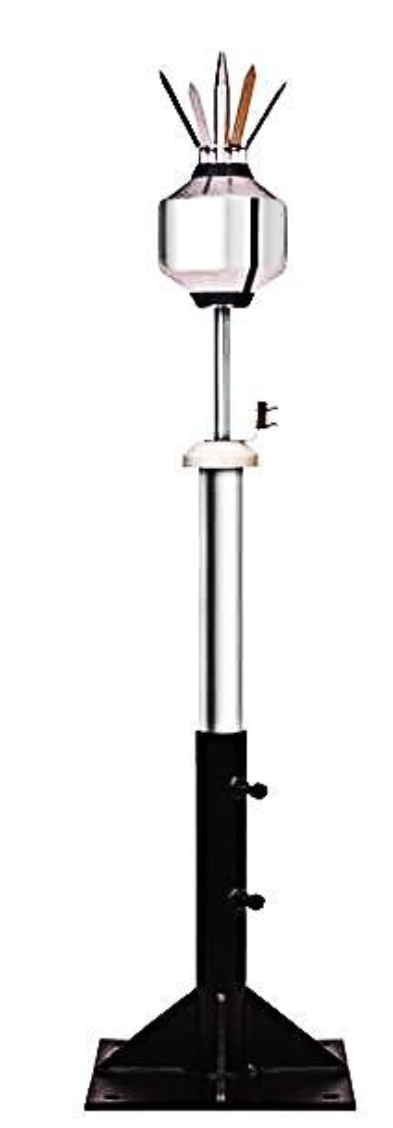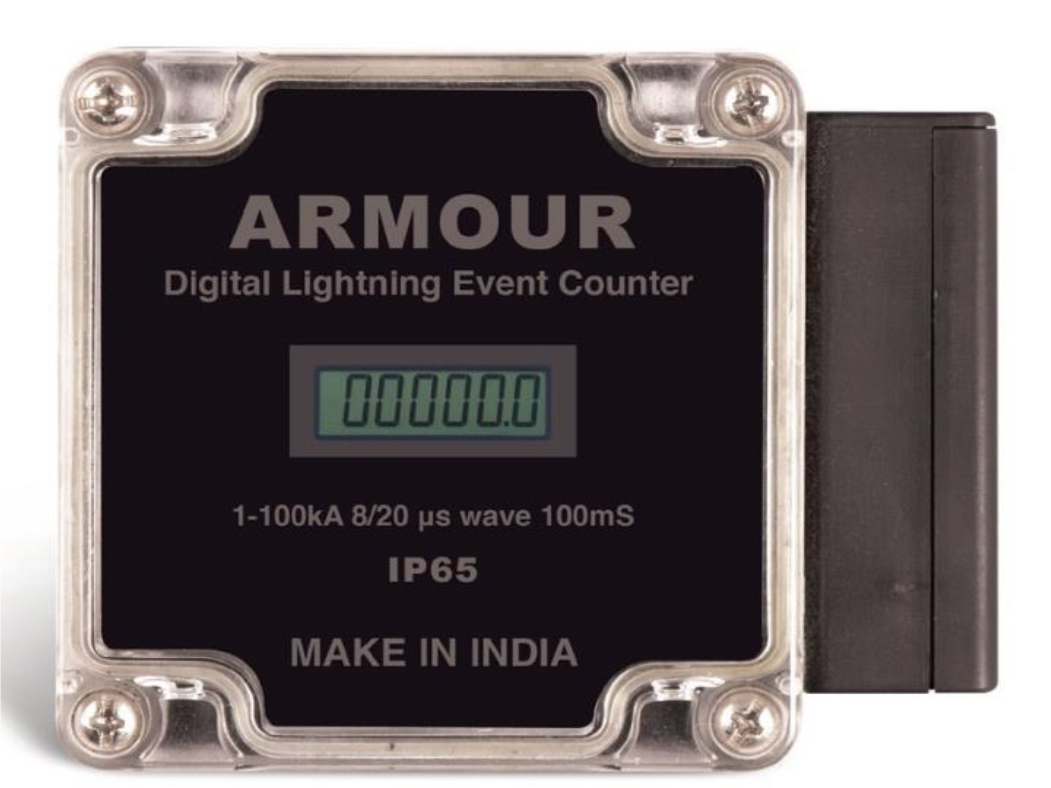Buildings and structures should be protected from the damages caused due to direct lightning strikes by installing
a properly designed lightning protection system as per the relevant Indian & International standards. The lightning
protection system comprises an air termination system, down conductor system and earthing system.
The air terminals are installed at the highest point of the structure to be protected to intercept the lightning
current downward leader and to provide a specific and safe path via the connected down conductor and made to
dissipate such high lightning current into the ground through the earth electrode buried into it.
There are two types of lightning protection system based on the type of air terminal being used. The conventional
lightning protection system is called a passive air terminal and the designing for the same is carried out based on
IS/IEC 62305 part 3. The other type of Air terminal is an active type of air terminal for which the design will be
carried out based on NFC 17-102. Whether to design Lightning Protection System as per the conventional IEC
62305 standards or by following the modern French NFC 17-102 standard, we are unbiased.
The probability of a structure being struck by a lightning flash can be greatly reduced by a properly designed air termination system.
The position of the air termination system shall be designed by using the following placement methods as specified by IS/IEC 62305-3.
Protection Angle Method or Cone of Protection Method is the traditional method of protecting the structures from lightning strikes. It is suitable for simple shaped buildings. It also has limitations on the height of the air terminal
In the Rolling Sphere Method, the air termination system shall be positioned by rolling a sphere of radius r around and on top of the structure to be protected in all possible directions. Rolling Sphere method shall be used for all types of buildings.
Mesh Method of lightning protection is suitable for structures with flat surfaces and sheds having slope less than 1/10. The size of the mesh depends on the class of LPS.

CIKIT with its R&D team is proud to present Armour ESE type Lightning Arrester, conceptualised, designed and developed for the market, which works on the principle of Early Streamer Emission type lightning protection system in accordance with NFC 17-102.
ESE air terminal is an active type of lightning arrestor. It is an electro mechanical device and does not require any external power supply for its operation. The internal design of ARMOUR ESE air terminal is designed in such a way that it stimulates upward leaders before any other object within its radius of protection.
The area protected by an ESE terminal depends upon the time difference between the streamer raised from the ESE terminal and the streamer raised from other passive objects placed at the same height. If this time difference is higher, the area protected by the air terminal will also be higher. That time difference is generally termed as triggering advance time and it is always expressed in microseconds (10-6 s or µs).
As per NFC 17-102, the value of ‘Δt’ should be between 10µs and 60µs. An air terminal is considered as ESEAT only if the triggering advance time is greater than 10 µs. The value of ‘Δt’ should be considered as 60µs for the calculation for all values greater than 60µs.
Based on the Triggering Advance Time there are three models of Armour ESE modules
Since the Armour 60 module triggers leaders 60 µs prior than other passive objects, the upward leader can propagate to a long distance which results in a larger radius of protection than Armour 25 and Armour 40 modules.


The Lightning Event Counter is a device used for sensing the lightning impulse and recording the number of lightning strikes that the Lightning arrestor air terminal has successfully grounded. This works on the principle of electro-magnetic induction caused by the lightning current.
